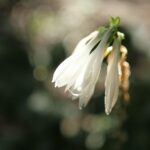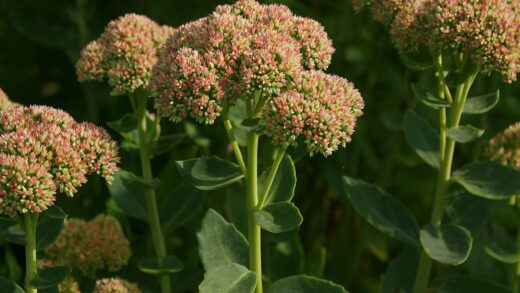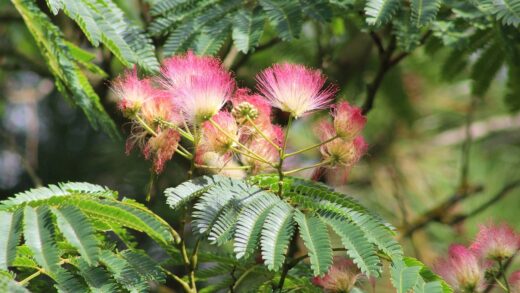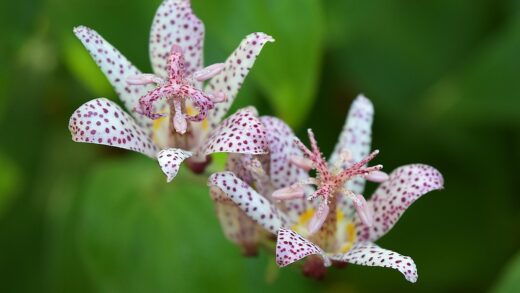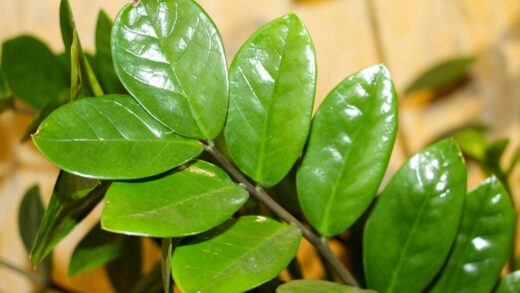Pruning is an essential maintenance practice for cherry laurel, fundamental to controlling its size, shaping its form, and promoting its overall health and vigor. This fast-growing shrub can quickly become overgrown and unkempt if left to its own devices, but it responds exceptionally well to cutting back. Whether you are aiming to create a perfectly manicured formal hedge, maintain a single specimen at a desired size, or rejuvenate an old, leggy plant, understanding the proper techniques and timing for pruning is crucial. A well-executed pruning strategy will not only keep the plant looking its best but will also encourage the dense, lush foliage that makes this evergreen so popular.
The primary reason most people prune cherry laurel is to maintain it as a hedge. Regular trimming encourages the plant to produce a dense network of branches and leaves, creating a solid screen for privacy and sound reduction. This shaping is not merely about aesthetics; it also ensures that all parts of the plant receive adequate sunlight, preventing the lower branches from becoming bare. Beyond hedging, pruning is also used to shape individual shrubs into more pleasing forms, removing wayward branches and encouraging a more compact and tidy habit.
From a plant health perspective, pruning serves several vital functions. It is the primary method for removing any wood that is dead, damaged, or showing signs of disease. This sanitary pruning helps to prevent the spread of pathogens and eliminates weak points in the plant’s structure. It also improves air circulation through the canopy of the plant, which is one of the most effective ways to reduce the incidence of common fungal diseases that thrive in stagnant, humid conditions.
Finally, pruning can be used for the dramatic purpose of rejuvenation. An old, overgrown cherry laurel that has become woody and bare at the base can be given a new lease on life through a hard prune, also known as renewal or rejuvenation pruning. This seemingly drastic measure involves cutting the plant back almost to the ground, which stimulates the growth of a profusion of new, vigorous stems from the base, effectively creating a brand new shrub over the course of one or two growing seasons.
The importance of pruning for cherry laurels
For a plant as vigorous as the cherry laurel, pruning is not just an optional task but a necessary component of its long-term management in a garden setting. Its rapid growth rate means that without regular intervention, it can easily outgrow its allotted space, overwhelming smaller neighboring plants and encroaching on pathways or structures. Regular pruning is the key to keeping its size in check and maintaining harmony within the landscape design. This control is especially critical when it is used as a foundation planting or in smaller garden spaces where its dimensions must be carefully managed.
More articles on this topic
Pruning directly influences the density of the shrub’s foliage. Each time you cut the tip of a branch, you remove the terminal bud, which produces hormones that suppress the growth of the buds further down the stem. With the terminal bud gone, these lateral buds are stimulated to grow, resulting in multiple new shoots where there was previously only one. This physiological response is the principle behind creating a dense hedge; repeated trimming multiplies the number of branches, leading to a thick, impenetrable wall of green foliage.
Beyond size and density, pruning is a tool for improving the health of the plant. Dead or broken branches serve no purpose and can be entry points for wood-boring insects and disease-causing pathogens. By promptly removing this compromised wood, you maintain the plant’s structural integrity and reduce its vulnerability to secondary problems. Thinning out crossing or rubbing branches also prevents wounds from forming, which can similarly become sites of infection. This type of maintenance is a proactive measure that contributes significantly to the plant’s overall resilience.
Ultimately, the act of pruning establishes a partnership between the gardener and the plant. It is a way of guiding the plant’s natural growth habit to fit a specific aesthetic or functional need within the garden. It allows you to shape the plant to your will, whether that is a crisp, formal hedge or a more natural, flowing form. This regular interaction also provides an opportunity to closely inspect the plant, allowing for the early detection of any potential pest or disease issues before they become serious.
The best time to prune
The timing of pruning is critical and can have a significant impact on the health and flowering of the cherry laurel. The single best time to perform the main structural or shaping prune is in the late spring or early summer, immediately after the plant has finished its annual flowering period. Pruning at this time allows you to enjoy the fragrant spring flowers before they are removed. More importantly, it gives the plant the entire summer growing season to recover from the pruning and produce a flush of new growth that will have ample time to harden off before winter.
More articles on this topic
A second, lighter trim can be carried out in late summer if needed to tidy up the shape of a formal hedge or remove any errant shoots. This trim should be much less severe than the main pruning and should be completed by the end of summer. It is crucial to avoid pruning cherry laurel in the autumn. Late-season pruning stimulates the plant to produce new, tender growth that will not be winter-hardy. This new growth is almost certain to be damaged or killed by the first hard frosts, which can weaken the plant and lead to dieback.
For the task of removing dead, damaged, or diseased wood, the timing is more flexible. This type of sanitary pruning can and should be done at any time of year, as soon as you notice the problem. There is no benefit to leaving a broken or diseased branch on the plant, as it can be a source of further damage or infection. Simply cut the affected branch back to a point of healthy, living tissue, making a clean cut with sharp, sterilized tools.
In the specific case of a severe rejuvenation or hard prune, the best time is in the late winter or very early spring, just before the plant breaks dormancy. At this time, the plant is full of stored energy in its root system, ready to fuel a massive flush of new growth as soon as the weather warms. Pruning during dormancy also minimizes the stress on the plant, as it is not actively trying to support a large amount of foliage. This timing ensures the quickest and most vigorous recovery.
Techniques for formative and maintenance pruning
Formative pruning is carried out on young plants to establish a strong, well-shaped framework for future growth. When you first plant a young cherry laurel, especially if you intend for it to be part of a hedge, you should trim back the top and sides by about one-third. This may seem counterintuitive when you want the plant to grow, but this initial pruning encourages dense branching from the base, preventing the plant from becoming tall and leggy. This practice should be repeated for the first couple of years after planting to build a solid, dense structure from the ground up.
Maintenance pruning for an established hedge involves regularly trimming the new growth to maintain the desired size and shape. For a formal hedge, this is often done with powered hedge trimmers for speed and efficiency, followed by secateurs to tidy up any large, shredded leaves. When trimming a hedge, it is best practice to create a shape that is slightly tapered, being wider at the base than at the top. This “batter” ensures that sunlight can reach the lower branches, keeping them leafy and preventing the bareness at the bottom that can plague untapered hedges.
For individual, informally grown shrubs, maintenance pruning is more about selective thinning and shaping. Instead of shearing the entire surface, you use secateurs or loppers to cut individual branches back to a side branch or a leaf node within the body of the plant. This technique, known as heading back, helps to control the size and encourages a denser habit without creating the rigid, formal look of a sheared hedge. The goal is to maintain the plant’s natural shape, just on a smaller scale, and to remove any branches that are crossing, rubbing, or growing in an undesirable direction.
Regardless of the technique, using the right tools is essential. For shearing hedges, long-bladed hand shears or electric/petrol hedge trimmers are suitable. For selective pruning of individual branches, a sharp pair of bypass secateurs is the tool of choice, as they make a clean cut that heals quickly. For branches thicker than about half an inch, a pair of long-handled loppers or a pruning saw should be used to avoid damaging both the tool and the plant. Always ensure your tools are clean and sharp before you begin.
Hard pruning and rejuvenation
Hard pruning, also known as renewal or rejuvenation pruning, is a drastic measure reserved for cherry laurels that have become severely overgrown, leggy, and bare at the base. It is a technique used to give the plant a complete restart. The process involves cutting all the stems and branches of the shrub back to a height of approximately 6 to 12 inches (15-30 cm) from the ground. While this can look shocking and leaves a bare stump, cherry laurels are exceptionally resilient and respond to this treatment with vigorous new growth.
The best time to perform such a severe prune is in the late winter or early spring, while the plant is still dormant. The plant’s roots have a large store of energy reserves from the previous season, which will be used to fuel the rapid growth of new shoots from the dormant buds at the base of the old stems. Performing the prune at this time minimizes the shock to the plant and maximizes the length of the upcoming growing season for recovery. You will be surprised at how quickly the plant sends up a multitude of new, vibrant stems.
After a hard prune, it is important to provide the plant with some aftercare to support its recovery. Once new growth begins to emerge, you can apply a balanced, slow-release fertilizer to the soil around the plant to provide the nutrients needed for the rapid growth. It is also crucial to keep the soil consistently moist throughout the following growing season. A layer of mulch around the base will help to conserve moisture and suppress weeds that would compete with the new shoots.
By the end of the first season after a hard prune, the shrub will have developed into a small but dense and multi-stemmed plant. You can then begin to selectively prune the new growth to encourage further branching and to start shaping the plant into its new, desired form. This rejuvenation technique is a testament to the toughness of cherry laurel and is an incredibly effective way to restore an old, unsightly plant to its former glory without the cost and effort of replacing it entirely.
Essential tools for pruning
The most fundamental tool for pruning cherry laurel is a good pair of bypass secateurs. These function like a pair of scissors, with one sharp blade that slices past a thicker, non-cutting hook. This action creates a clean, precise cut that causes minimal damage to the plant tissue, allowing for rapid healing. Anvil secateurs, which have a single blade that closes onto a flat surface, are more likely to crush the stems of a cherry laurel and should be avoided. Secateurs are ideal for cutting branches up to about half an inch in diameter.
For branches that are too thick for secateurs, typically between half an inch and 1.5 inches in diameter, loppers are the appropriate tool. Loppers are essentially long-handled secateurs that provide greater leverage, allowing you to cut through thicker branches with ease. Like secateurs, they are available in bypass and anvil styles, and the bypass style is always the preferred choice for cutting live wood. The long handles also allow you to reach further into the shrub without having to climb into it.
When it comes to shaping a formal hedge, hedge shears are the classic and still very effective tool. These have long, flat blades and are used to cut multiple small stems and leaves at once, creating a smooth, uniform surface. For larger hedges, many gardeners opt for powered hedge trimmers, which are available in electric, cordless (battery), and petrol models. While much faster, powered trimmers can sometimes tear and shred the large leaves of the cherry laurel. It is often a good practice to go back over the hedge with secateurs to snip off any large, damaged leaves for a cleaner appearance.
Finally, for any branches that are too large for even loppers to handle, a pruning saw is necessary. A good pruning saw has sharp teeth designed to cut efficiently on the pull stroke, which gives you more control. Keeping all your tools in good condition is paramount. The blades should be kept sharp to ensure clean cuts, and they should be cleaned and sterilized regularly, especially after cutting diseased wood, to prevent the spread of pathogens from one plant to another. A quick wipe with rubbing alcohol or a dilute bleach solution is all that is needed.











